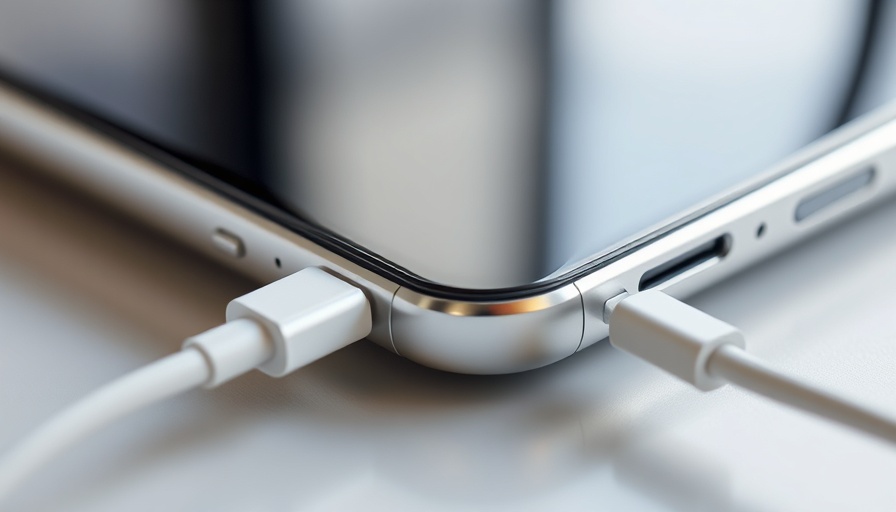
Apple's Vision for the Future: The iPhone 17 Air
Apple has long been known for its innovative design and ambitious tech advancements, and the upcoming iPhone 17 Air might be its most exciting venture yet. Slated for release in the fall of this year, this new model could redefine the smartphone landscape with its remarkably slim profile. Reports indicate that the iPhone 17 Air will measure just 5.5mm thick, which, if true, would make it one of the thinnest smartphones on the market. The vision of a sleeker device reminiscent of the MacBook Air suggests that Apple is aiming for both performance and aesthetics in this model.
A Port-less Future? The Pros and Cons
Among the several groundbreaking design elements considered, Apple reportedly mulled over the idea of creating a completely port-free smartphone. This would mean that users would rely solely on wireless charging and cloud data syncing, eliminating the need for a USB-C port altogether. While this futuristic concept sounds enticing for minimalists, it raises several concerns, particularly regarding usability and repairability. Without physical ports, users could find themselves tethered to the cloud for all their data transfers and charging needs.
Some industry experts have noted that the move towards a port-less design could mirror Apple's earlier shifts, such as the transition to wireless headphones with the AirPods. However, the new vision does present a considerable challenge: balancing innovation with user expectations. Citing regulatory challenges in Europe, which mandate the use of USB-C connectors, Apple initially shelved the idea of a fully port-less iPhone for now, though it remains a possibility for future models.
Consumer Impact: What Could This Mean for Users?
The potential implementation of a port-less design could significantly affect users' experiences. On one hand, it would streamline the device’s design and potentially increase durability by reducing vulnerable openings that can accumulate dirt and dust. On the other hand, users accustomed to wired chargers might find the complete reliance on wireless systems inconvenient, particularly in situations where wireless power is unavailable. The MagSafe system, which allows for easy magnetic attachment for charging, could mitigate some of these concerns, but awareness and adaptation would be necessary.
Regulatory Roadblocks: Apple's Compliance Challenges
Apple's decision to temporarily abandon the idea of a port-less iPhone highlights the ongoing clash between technology and regulation. The European Union has been proactive in mandating standardized charging ports for all mobile devices, aiming to reduce electronic waste and consumer frustration from multiple incompatible chargers. As Apple navigates this regulatory landscape, the pressure may push the company towards more user-friendly designs that comply with the EU's requirements while still innovating.
Competitive Landscape: Thinness as a Market Trend
The iPhone 17 Air is not alone in this quest for ultra-slim designs. Competitors like Samsung, Honor, and Xiaomi are reportedly exploring similar innovations. The concept of thinner phones isn’t entirely new, with brands like Vivo and Meizu previously attempting to release devices without ports or buttons at all. The success of these products has been mixed, often coming up short in terms of market readiness and consumer acceptance.
As the smartphone market continues to evolve, it is clear that the drive for thinner models will remain a key focus. Apple’s decision to showcase a highly refined product like the iPhone 17 Air might serve as a test case for consumer preferences regarding slimness versus functionality.
Conclusion: Keeping an Eye on the Technology Trends
As we await the official announcement of the iPhone 17 Air, the ongoing evolution of smartphone technology is worth observing closely. From innovative designs to regulatory challenges, Apple's unveiling may set the stage for future trends within the tech world. The excitement surrounding the iPhone 17 Air reminds us how much smartphones and consumer preferences are intertwined.
If you're interested in staying informed about the latest developments in technology and smartphone innovations, now is the perfect time to explore more about how these advancements might shape our digital future.
 Add Row
Add Row  Add
Add 



Write A Comment